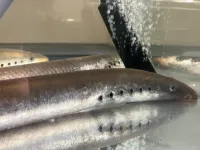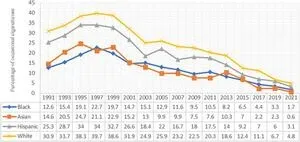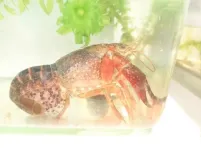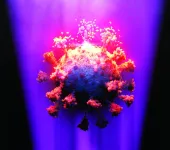Study on lamprey embryos sheds light on the evolutionary origin of vertebrate head
Scientists study developing lamprey embryos to clarify the origin of vertebrate head, paving the way to a better understanding of ancestral vertebrates
2024-01-10
(Press-News.org)
The origin of the vertebrate skull is a topic of much debate among evolutionary biologists. Some believe that the vertebrate head has developed as a result of modification of the segmental elements of the trunk, such as the vertebrae and somites. On the other hand, others believe that the vertebrate head has evolved as a new, unsegment body part, unrelated to other widely observed embryonic segments somites. Interestingly, previous studies on embryos have revealed the presence of some vestiges of somites in the head mesoderm (e.g., head cavities and somitomeres). However, homology between trunk somites and such head segments has been controversial.
The failure to understand the evolutionary origins of the vertebrate head is also attributable to the lack of studies on extant species such as lampreys, which are known to share several traits with fossil jawless vertebrates and retain primitive traits related to the head mesoderm. While some studies have focused on the embryonic morphology of lampreys, they have often fallen short because of challenges like tissue destruction and acidic fixation during examination, making it difficult to observe the formation of head mesoderm and trunk somites.
Now, however, a research team led by Assistant Professor Takayuki Onai from the University of Fukui, Japan, has utilized advanced techniques like transmission electron microscopy and serial block-face scanning electron microscopy (SBF-SEM) to understand the development of the head mesoderm and somites in lamprey embryos. The researchers also analyzed the morphology and gene expression patterns of cephalochordate and hemichordate (both being invertebrates) to understand the origins of somites and head mesoderm from an evolutionary perspective. This paper was made available online in iScience on November 13, 2023, and is co-authored by Dr. Noritaka Adachi from Aix-Marseille Université, Dr. Hidetoshi Urakubo from the National Institute for Physiological Sciences (NIPS), Dr. Fumiaki Sugahara from Hyogo Medical University, Dr. Toshihiro Aramaki from Osaka University, Dr. Mami Matsumoto from NIPS and Nagoya City University, and Dr. Nobuhiko Ohno from NIPS and Jichi Medical University.
To clarify the presence or absence of somites in the head mesoderm during early stages of diversification, the researchers focused on rosettes, which are major somite patterns and are important for the subsequent development of vertebrae. Their initial observations of lamprey embryos showed that the tissue closely related to the formation of facial muscles and other elements of the skull, known as the head mesoderm, did have cell clusters with features similar to somite rosettes. To clarify if these cell clusters were indeed rosettes, they conducted ultrastructural experiments, including the SBF-SEM and gene expression analysis. This examination of the cellular morphology and gene expression revealed that the cell clusters were clearly distinct from rosettes. “The cell clusters we observed are likely lamprey-specific features, as they are not recognizable in the head mesoderm of both hagfish and shark embryos,” explains Dr. Onai.
Furthermore, gene expression analysis also revealed the absence of segmental expression of somitogenesis-related genes, indicating their distinctiveness from somites. These findings indicate that the rosette pattern typically seen in somites is not necessarily the essential or most basic feature that defines the process of bodily segmentation.
Moreover, the experiments provide evidence that the vertebrate head mesoderm diverged during the early phases of vertebrate evolution. Furthermore, comparison of embryos of hemichordates (a basal deuterostome), amphioxus (a basal chordate), and vertebrates revealed that the somites likely arose from the “endomesoderm” tissue of an ancient deuterostome ancestor. The evolutionary origin of somites has been the central question in zoology for more than 150 years, and in this study, Onai et al., revealed the enigma. Regarding the evolutionary mechanism for the emergence of head mesoderm, they found that the head mesoderm emerged upon the segregation of mesodermal genes between the front and back parts (rostro-caudal axis) of organisms.
“Taken together, our findings revealed a different evolutionary origin for the vertebrate head mesoderm, suggesting that it evolved from the repatterning of an ancient mesoderm and diversified even before the emergence of jawed vertebrates,” concludes Dr. Onai.
In summary, the finding that the cell clusters present in the head mesoderm are distinct morphologically and molecularly from somites, favors a new model where the vertebrate head mesoderm diverged during early evolution. This sheds more light on the age-old debate on the evolution of the vertebrate head and can help us advance the understanding of our own origins.
END
ELSE PRESS RELEASES FROM THIS DATE:
2024-01-10
Procambarus clarkii is a crustacean species native to American freshwater bodies. Brought to Japan in the 1920s as a feed for frogs, this crustacean has slowly taken over the Japanese freshwaters by predation and propagation. In fact, in 2023, the red-swamp crayfish was designated as an invasive alien species by the Japanese Ministry of the Environment and of the Agriculture, Forestry and Fisheries.
One way to control the growth in population of red-swamp crayfish and the accompanying crisis is to capture the red-swamp crayfish in their reproductive ...
2024-01-10
Research Highlights:
Despite drops in overall cardiovascular disease deaths from 1999-2019, cardiovascular disease deaths in which substance use was cited as a contributing factor increased an average of 4% per year, with the death rate accelerating to 6.2% from 2012-2019.
Prominent increases in cardiovascular deaths associated with substance use were most notable among women, American Indian or Alaskan individuals, younger individuals, rural area residents and users of cannabis and psychostimulants.
Identifying high-risk groups is crucial for prioritizing preventive measures to reduce substance use linked with cardiovascular disease deaths, particularly ...
2024-01-10
CAMBRIDGE, MA -- Sequencing all of the RNA in a cell can reveal a great deal of information about that cell’s function and what it is doing at a given point in time. However, the sequencing process destroys the cell, making it difficult to study ongoing changes in gene expression.
An alternative approach developed at MIT could enable researchers to track such changes over extended periods of time. The new method, which is based on a noninvasive imaging technique known as Raman spectroscopy, doesn’t harm cells and can be performed repeatedly.
Using ...
2024-01-10
HOUSTON – (Jan. 10, 2023) – The brain is the most protected organ in the body, sheathed in a complex and nearly impenetrable barrier of specialized blood vessels. While this particular anatomical setup protects it from outside invaders, it also makes it difficult for researchers to study how specific genes are expressed ⎯ and how such changes in gene expression may lead to disease.
Now Rice University scientists have developed a noninvasive way to monitor gene expression dynamics in the brain, making it easier to investigate brain ...
2024-01-10
Barcelona, 10 January 2024 – Mutations, which occur continuously in every cell of our bodies, are a key contributor to cancer, ageing, and neurodegeneration. While exposure to mutagenic chemicals, or mistakes in cellular processes during DNA replication contribute to these mutations, the exact distribution and patterns of these changes across human chromosomes have remained a mystery until now.
Dr. Fran Supek, ICREA researcher and head of the Genome Data Science lab at IRB Barcelona, and Marina Salvadores, PhD student ...
2024-01-10
New research has revealed how light can be used to destroy infectious coronavirus particles that contaminate surfaces. Scientists are interested in how environments, such as surgeries, can be thoroughly disinfected from viruses such as SARS-CoV-2 that caused the COVID-19 pandemic.
SARS-CoV-2 viral particles are composed of a core of nucleic acid chains that contain the genetic information of the virus, surrounded by a lipid membrane with proteinous spikes sticking out. Each component is necessary for infection.
Researchers from the University of Southampton investigated how ultraviolet laser light destroys the virus by impacting each of these critical components. By using a specialised ...
2024-01-10
Diarrhoea is, globally, the second largest cause of death for children under 5. Contributing to more than 500,000 deaths, only pneumonia kills more children each year. Climate change, driving increased flooding and droughts, threatens the fragile progress made in reducing the burden of diarrheal disease over the past decades. Together with the Amsterdam Institute of Global Health and Development, Amsterdam UMC is set to lead a global consortium in the hunt for improved interventions.
"We see that the impact of climate change on diseases transmission depends on the constantly changing interaction between climate events, local ...
2024-01-10
In a survey-based study of 3rd to 12th grade students in Puerto Rico after 2017’s Hurricane Maria, certain symptoms of post-traumatic stress disorder (PTSD) were linked with a higher risk of using drugs or alcohol.
The study, which is published in the Journal of Traumatic Stress, included 91,732 youths who completed a survey 5–9 months after Hurricane Maria made landfall in Puerto Rico. Associations between PTSD symptoms and substance use were examined using a network conceptualization, which views disorders as stemming from interactions ...
2024-01-10
Moisture levels in the soil can impact the effects that microplastic pollution has on soil fungi, according to new research published in Environmental Microbiology.
By studying soil samples mixed with microplastics under different conditions, investigators found that when soil is well-watered, toxic chemicals in microplastics can leach into the soil and hinder soil fungal richness. With dry soil, however, the leaching of water-extractable chemicals is less pronounced and therefore less impactful on soil fungal structure.
The researchers also noted that under dry conditions, microplastics help soil hold water for longer, which could help ...
2024-01-10
A screening tool often used in primary care clinics to detect cognitive impairment has shortcomings when applied to ethnically and linguistically diverse older adults, according to a study published in the Journal of the American Geriatrics Society.
The study looked to see whether currently published English and Spanish cut points for cognitive impairment in the Montreal Cognitive Assessment (MoCA) are appropriate in diverse community-based adults aged 65 years or older with cognitive concerns in the Bronx, New York. There were 231 participants (43% ...
LAST 30 PRESS RELEASES:
[Press-News.org] Study on lamprey embryos sheds light on the evolutionary origin of vertebrate head
Scientists study developing lamprey embryos to clarify the origin of vertebrate head, paving the way to a better understanding of ancestral vertebrates





